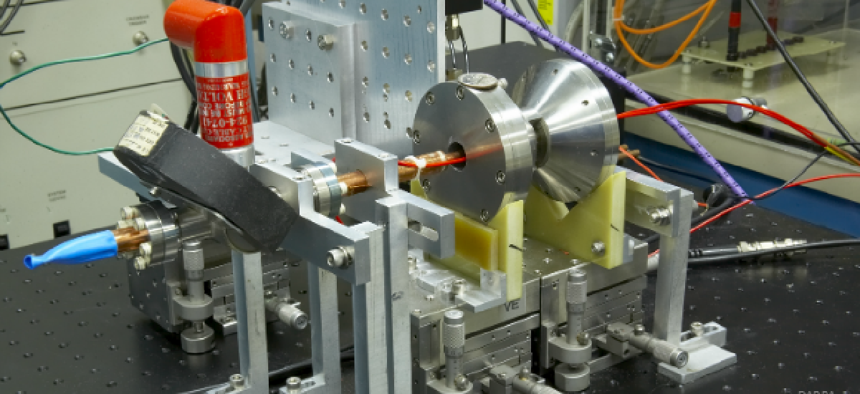DARPA innovation could spawn ultra-fast wireless nets, sensors that see through clouds


Connecting state and local government leaders
Defense Advanced Research Projects Agency researchers have broken a barrier in the use of solid-state electronics that could lead to gigabit-speed networks and sensors that see through clouds.
The Defense Advanced Research Projects Agency has developed a vacuum-tube-based amplifier capable of operating in a part of the radio spectrum normally occupied only by ultra-high frequency laser and microwave technologies.
The breakthrough by Northrop Grumman researchers working on DARPA’s Terahertz Electronics (THz) program could lead to applications ranging from very fast 100-gigabit-per-second wireless networks to sensors capable of peering through clouds under any weather condition, DARPA officials said.
Recently, DARPA researchers were able to demonstrate a 1 centimeter wide vacuum-tube-based 0.85 terahertz power amplifier, the world’s first, they said. The new vacuum-tube-based amplifiers will be designed to boost significant increases in output power at frequencies beyond 1.0 THz and to radiate this energy at an antenna.
“Vacuum tubes bring back visions of antique electronics, but these are not your grandparents' TV sets,” said DARPA program manager Dev Palmer, adding that researchers have “taken tools developed by the (semiconductor) revolution -- microfabrication methods and materials -- and applied them to reliable, efficient vacuum-tube technologies.
“This mix of old and new gives us a never-before-achieved terahertz-class vacuum power amplifier.”
The agency also plans to use the THz-class amplifier in a demonstration of its Video Synthetic Aperture Radar (ViSAR) project, which aims to build an aerial sensor system that can see through cloud layers to take high-resolution video and spot targets in any weather condition.
Current infrared airborne weapon systems can’t peer through clouds, while synthetic aperture radar technology can’t provide high-resolution video imagery of ground targets through clouds. The ViSAR program will use an extremely high frequency sensor that operates through clouds as effectively as current sensors operate in clear weather.
“Further research and development in this field will help unlock applications for our military in this historically difficult to access part of the spectrum,” said Palmer.
NEXT STORY: A vision for BYOD: Virtual smartphones




